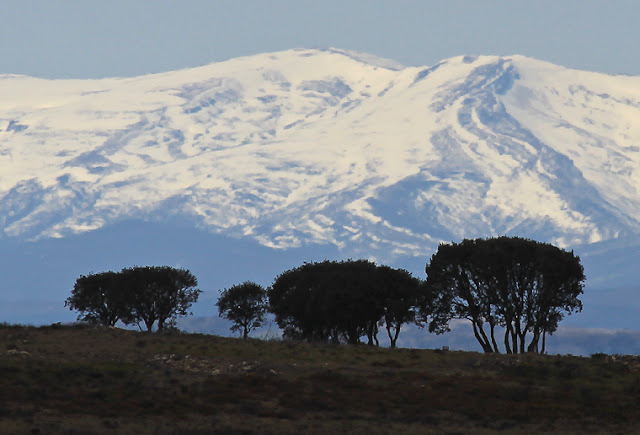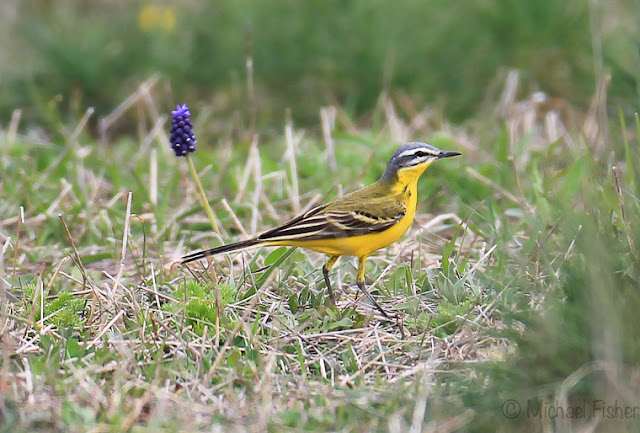After Guardo, the scenery became vast and bleak. With the snow line about to meet us, we constantly scrutinised the mountainsides, hoping to see Chamois.
A few years ago, this act produced good results when we found the Iberian Ibex in Almeria province.
http://roadrunnersmikelinda.blogspot.fr/2014/04/in-search-of-iberian-ibex.html
And once more, it worked; we got a sighting as we approached the Puerto de Monteviejo, just south of Riaño. In the Cordillera Cantabrica.
We had seen them before on the high mountainsides of Zuriza, but we could only discern them in Navarra through our telescope.
These guys seemed as happy to watch us!
They actually seemed quite inquisitive!
The leader decided enough, and they started their retreat back up the mountain.
Their last glance back!
That's it, they were off and good luck to them!
Riaño looked beautiful but also quite desolate as we passed around the shores of the Embalse de Riaño.

as
As we approached Puerto de San Isidro, the snow was getting quite deep, but the very efficient Spanish snowploughs had cleared the road.
There was no stopping as we passed over the top and descended into Asturias.
Through the tunnel at the Puerto, with its giant 18" inch-long icicles, the road was only passable, albeit we could not turn around had we tried. The steep mountainsides seemed to whisper avalanche! Draped thick in snow, this was a very different World to our accent, and yes, in two sections of our descent, avalanches had fallen, damaging the road, but we had no option but to continue.
We stopped for any photographs once we had passed through the village of Felechosa and out of the snow!
We parked for the night safely at (Aller) Cabañaquinta and were rewarded with seeing a male Bullfinch.
What a superb day of "travels".
Tomorrow, we head for the Reserva Nacional de Somiedo,
Brown Bear, not a chance, not even a glimpse.

























































